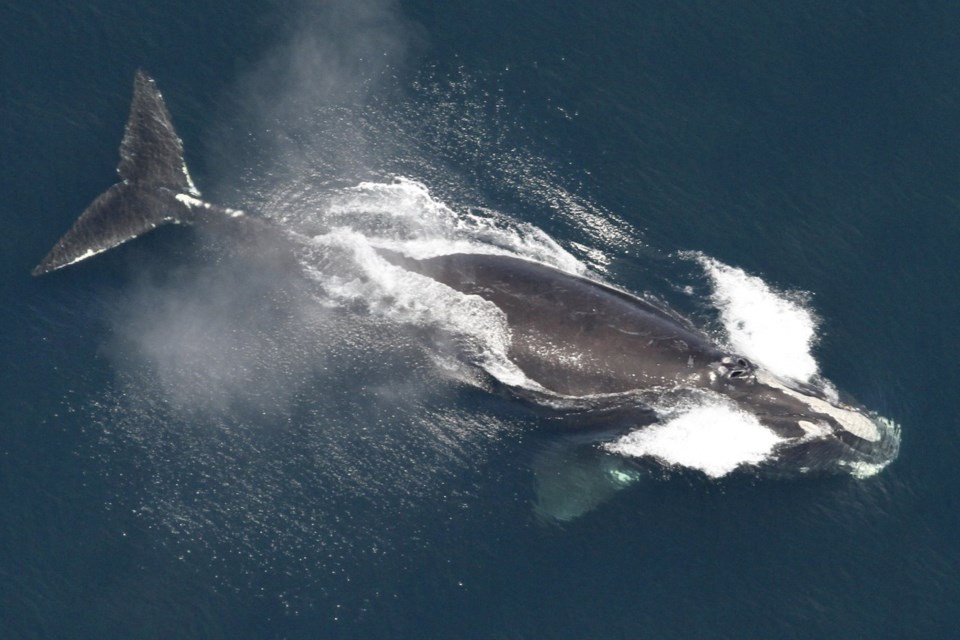BOOTHBAY HARBOR, Maine (AP) — One of the rarest species of whale in the world has increased slightly in population, encouraging conservationists to call on the federal government and the shipping and fishing industries to do more to bring the giant animals back from .
The North Atlantic right whale, which can weigh up to 150,000 pounds (68,039 kilograms) and lives off the East Coast, plummeted in population in the 2010s. The critically endangered whales, which are stressed by global warming and vulnerable to ship collisions and entanglement in fishing gear, individuals by the early 2020s.
A group of researchers that studies the whales said Tuesday that the population increased to an estimated 372 in 2023. That's an increase of about 4% from 2020, and “heartening news” after the whale's population fell by about 25% from 2010 to 2020, researchers said in a statement.
The researchers are members of the North Atlantic Right Whale Consortium, which is a longstanding collaboration between scientists, conservationists, marine industry members and others. Heather Pettis, a research scientist at the New England Aquarium's Anderson Cabot Center and the chair of the consortium, said conservationists and government regulators “still have a great deal of work to do” to ensure the species keeps recovering.
“It's a really vulnerable population. One poor calving year can really impact the total population,” Pettis said. “We need to make sure the whales can calve, breed, feed, do the things they need to do without stressors.”
Recent births show an improvement from the 2010s, but the number of new calves is below what scientists saw in the 2000s, and threats remain a major concern. There have been five detected right whale deaths and four other lost calves this year — the count since 2019 — and these nine deaths could result in a population decrease for 2024, the consortium said.
Several right whale mortalities this year showed evidence of chronic entanglement and vessel strikes — evidence the government must act more quickly to enact new fishing and shipping restrictions, conservation groups said.
“While an increase in population is hopeful, the North Atlantic right whales washing up dead on our shores speak for themselves — we must stop killing them," said Gib Brogan, campaign director at Oceana.
Protecting the whales with new rules has proven difficult. A coalition of environmental groups in February, aiming to force the agency to finalize ship speed rules it proposed in 2022 to protect whales from ship strikes. Rules proposed by National Marine Fisheries Service to lower the risk of whales getting entangled have drawn .
The whales migrate every year from calving grounds off Florida and Georgia to feeding grounds off New England and Canada. The journey has gotten more dangerous in the era of warming ocean waters because the whales have had to stray from established protected zones in search of the tiny marine organisms they eat, scientists have said.
The whales were nearly hunted out of existence by whalers by the 1890s. They have been federally protected for decades, but have never recovered their population to pre-whaling levels.
Patrick Whittle, The Associated Press



